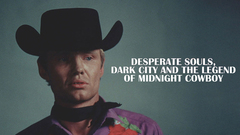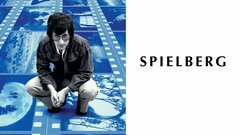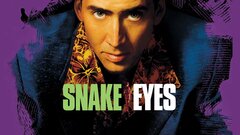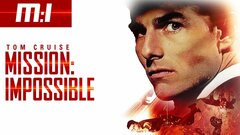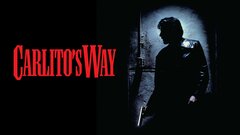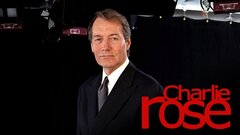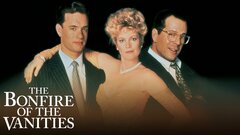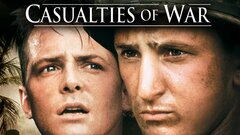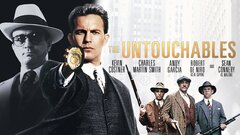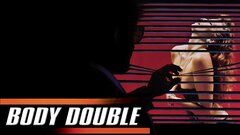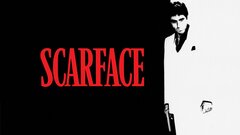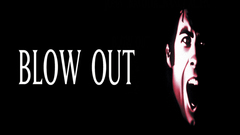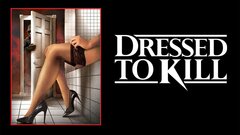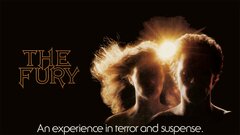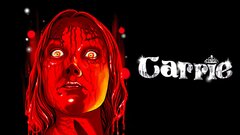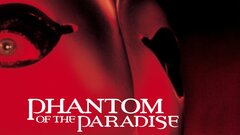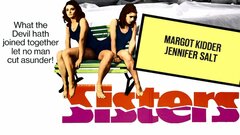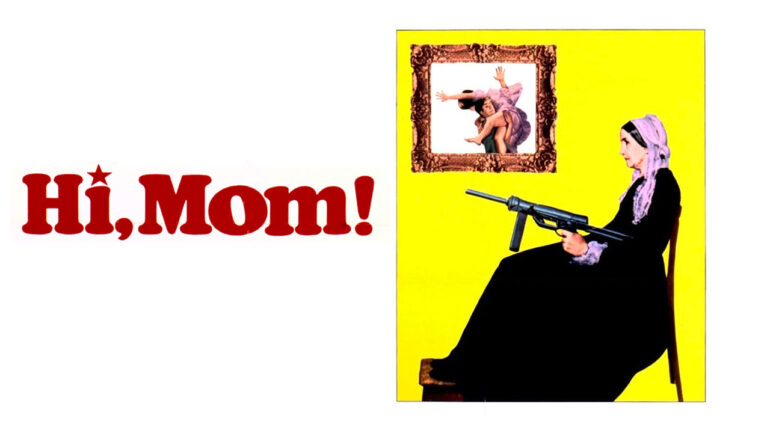Director Brian De Palma focused his creative efforts on making viscerally disturbing thrillers that were both stylish and violent. After emerging onto the scene with small independents like "Greetings" (1968) and "The Wedding Party" (1969), De Palma touched on Hitchcock's "Vertigo" (1958) as inspiration for the thriller "Obsession" (1976). But he had one of his most lasting successes with "Carrie" (1976), an adaptation of Stephen King's first novel and a graphic horror thriller about teen cruelty that featured one of the most memorable uses of fake blood in cinema history.
Following "The Fury" (1978) and "Dressed to Kill" (1980), wherein he honed his signature stylistic flourishes, De Palma directed John Travolta in "Blow Out" (1981), one of his most critically regarded films. De Palma returned with renewed vigor and directed the film "Scarface" (1983), which originally earned an X-rating for its graphic violence, while later becoming a favorite among many filmgoers.
He followed with what many considered his best film, "The Untouchables" (1987), which was a successful blend of his usual cinematic styling with strong performances from its leading actors.
The beginning of the decade saw him helm the challenging adaptation of Tom Wolfe's "The Bonfire of the Vanities" (1990), while later directing the mega-successful "Mission: Impossible" (1996), perhaps his most straightforward studio film.
Though he triumphed with the critically lauded, but underappreciated "Carlito's Way" (1993), De Palma had less success with the likes of "Snake Eyes" (1998), "Mission to Mars" (2000) and "The Black Dahlia" (2006), all of which demonstrated his ability to combine great cinematic triumphs with lesser, but always intriguing, films.
Born on Sept. 11, 1940 in Newark, NJ, De Palma was raised in a Roman Catholic home in nearby Philadelphia, PA by his father, Anthony, an orthopedic surgeon, and his mother, Vivienne. While attending various Quaker schools throughout his youth, including the Friends Central School in Philly, he became interested in physics and science, and won a top prize at a regional science fair for his high school science project, "An Analog Computer to Solve Differential Equations."
De Palma continued his study of physics while at Columbia University, but discovered movies after making a couple of short films, which led to changing his major to fine arts. He soon became a member of the drama group, the Columbia Players, before graduating with his bachelor's in 1962.
De Palma became one of the first male students at the newly coed Sarah Lawrence College in Bronxville, NY, where he earned his masters in fine arts and filmmaking. It was at Sarah Lawrence that De Palma made his first feature film, "The Wedding Party" (1969), a marital comedy that was co-written with his professor, Wilford Leach, financed by Cynthia Moore, and starred a young Robert De Niro in his first feature role.
Though he directed "The Wedding Party" first, De Palma had his second film, "Greetings" (1968), released to theaters before its predecessor. Again starring De Niro, "Greetings" was a strong satirical jab at the turbulent 1960s that marked an assured entry into filmmaking for the young director.
After directing De Niro again in the black comedy "Hi Mom!" (1970), De Palma made his first studio film, "Get to Know Your Rabbit" (1972), a comedy about a corporate executive (Tom Smothers) sick of the daily grind who quits his job in order to become a tap-dancing magician. De Palma went back to independent filmmaking with "Sisters" (1973), a psychological thriller about a pair of Siamese twins (Margot Kidder) who are investigated by a neighboring journalist (Jennifer Salt) sure that she saw one of them commit murder.
Once again channeling Hitchcock, De Palma directed perhaps one of his most controversial movies, "Dressed to Kill" (1980), which owed an obvious debt to the Master's classic, "Psycho" (1960). Starring Angie Dickinson as a sexually frustrated housewife who finds release with a mysterious man, only to be cut down in an elevator following their tryst, "Dressed to Kill" was a hit at the box office despite controversy surrounding the use of a body double (Victoria Lynn) to replace star Dickinson, as well as calls of misogyny and insensitivity toward transgendered people from respective groups.
He next directed John Travolta in "Blow Out" (1981), a highly-praised thriller that was a huge box office disappointment due to word-of-mouth over its bleak ending and its lead actor's fading star power at that time. An homage to Michelangelo Antonioni's "Blowup" (1966), the paranoid thriller was a stylish look at voyeurism, and the tragic consequences of trying to relieve one's self of guilt, while its overt use of moviemaking techniques inside the film was a sly commentary on filmmaking's ability to both distort and reinvent the truth.
Making perhaps the most memorable film in his career, De Palma remade Howard Hawks' 1932 crime drama, "Scarface" (1983), in bloody, over-the-top fashion. Depicting the rise and fall of Cuban immigrant, Tony Montana, a violent refugee who becomes a successful, but no less brutal cocaine dealer, "Scarface" featured a heightened visual style that was punctuated with graphic violence and even more graphic language.
Though his film was initially given an X-rating by the Motion Picture Association of America (MPAA), De Palma lobbied for an R-rating after a third cut, only to release the original version following confusion over the edits. "Scarface" became a classic in the gangster genre despite many being turned off by the violence, and even contained the famous line, "Say hello to my little friend," which lived on in cinema infamy as one of many memorable quotes from the film.
He next directed his third Hitchcock homage, "Body Double" (1984), his take on "Rear Window" (1954) which transforms itself implausibly into "Vertigo" (1958). Once again tackling the theme of voyeurism, while also featuring his trademark graphic violence and overt sexuality, De Palma helmed one of his more critically maligned movies, though "Body Double" gained a small cult following over the years.
At the time of its release, however, women's groups were up in arms over the misogyny run rampant, particularly the murder of one woman who is graphically killed by being drilled into the floor by an assailant who uses the power tool as a phallic extension.
Following this disappointment, De Palma had his greatest triumph with "The Untouchables" (1987), a violent, meditative and well-acted look at a young Elliot Ness (Kevin Costner), who partners with a gruff Chicago police officer (Sean Connery) to take down notorious crime boss Al Capone (Robert De Niro). Filled with lush period detail, though riddled with historical inaccuracies, "The Untouchables" was hailed by critics while earning a significant take at the box office.
The film also earned four Academy Award nominations, and earned Connery a Best Supporting Actor statue. Despite all else that followed, "The Untouchables" remained one of De Palma's finest achievements.
The director turned to another period of recent history, this time the Vietnam War, with "Casualties of War" (1989), a compelling, true-life story about a group of American soldiers led by a battle-scarred sergeant (Sean Penn), who takes his frustration out on his squad's new recruit (Michael J. Fox). Perhaps a little reminiscent of Oliver Stone's "Platoon" (1986), "Casualties of War" nonetheless did a good job portraying the dark and complex psychological landscape of war.
With a financial hit like "Mission: Impossible" under his belt, De Palma presumably had his pick for his next film. Which was why his choice to direct "Snake Eyes" (1998), a conspiracy thriller starring Nicolas Cage as a corrupt detective trying to solve the assassination of the Secretary of Defense (Joel Fabiani), caused some to scratch their heads.
Though full of his usual stylistic excesses, including a fast-moving camera, detailed scenery and rhythmic editing, "Snake Eyes" suffered under the weight of Cage's penchant for over-acting, which in this movie reached new heights. The movie also underperformed at the box office, demonstrating once again that De Palma's ability to generate financial hits was inconsistent.
Even more poorly received was "Mission to Mars" (2000), a not-too-futuristic sci-fi adventure which contained a handful of powerful kicky images that were in line with his bag of visual tricks. But De Palma's flourishes and the film's top-flight cast of Tim Robbins, Gary Sinise, Don Cheadel and Connie Neilson were not enough to pump life into the longwinded, uninspired script.
Continuing to reaffirm his reputation for adding visual panache to clearly inferior material, De Palma returned to the familiar ground of the erotic thriller with his self-penned "Femme Fatale" (2002), a trashy and lurid noir starring Rebecca Romijn as a former jewel thief whose reinvented life as a powerful politician's wife is turned upside down by an intrusive photographer (Antonio Banderas).
Despite the sizzling onscreen chemistry between Romijn and Banderas, "Femme Fatale" earned only $6 million at the box office. De Palma tackled Los Angeles' most notorious and grisly unsolved murder for his next film, "The Black Dahlia" (2006), a flashy, but badly flawed adaptation of James Ellroy's opening salvo to his famed L.A. Quartet.
Ellroy's novel was a complicated and richly-textured noir thriller about two hard-edged cops (Josh Hartnett and Aaron Eckhart) who descend into obsession, corruption and sexual degeneracy as they investigate the brutal murder of would-be actress Elizabeth Short (Mia Kirshner), found vivisected in a vacant lot.
Always one to choose style over substance, De Palma honed down the dense novel to its bare essentials while using his usual visual trickery to add heft to a thinned-down storyline. Some scenes stood out - namely the black-and-white screen tests of Short performing for casting directors - but overall, De Palma disappointed, particularly with an unbelievable ending that left audiences confused. Poor reviews and general disinterest translated into a poor showing in theaters.
The following year, De Palma once again demonstrated his knack for polarizing critics with his so-called fictional documentary, "Redacted" (2007), a look at the rape and murder of an Iraqi schoolgirl by U.S. soldiers. While De Palma maintained the stance that his film was a fictional accounting of what happened in March 2006 in Mahmudiyah, where a 14-year-old girl was gang-raped and murdered following the execution of her family, he nonetheless presented his story using real images and news footage.
Attacked by the right-wing media for allegedly portraying the troops in a negative light, De Palma and producer Marc Cuban were able to fend off the criticisms, though in the end their film was overwhelmingly ignored by audiences despite positive showings at various film festivals, including the 2007 Venice Film Festival, where De Palma earned a Silver Lion for Best Director.
